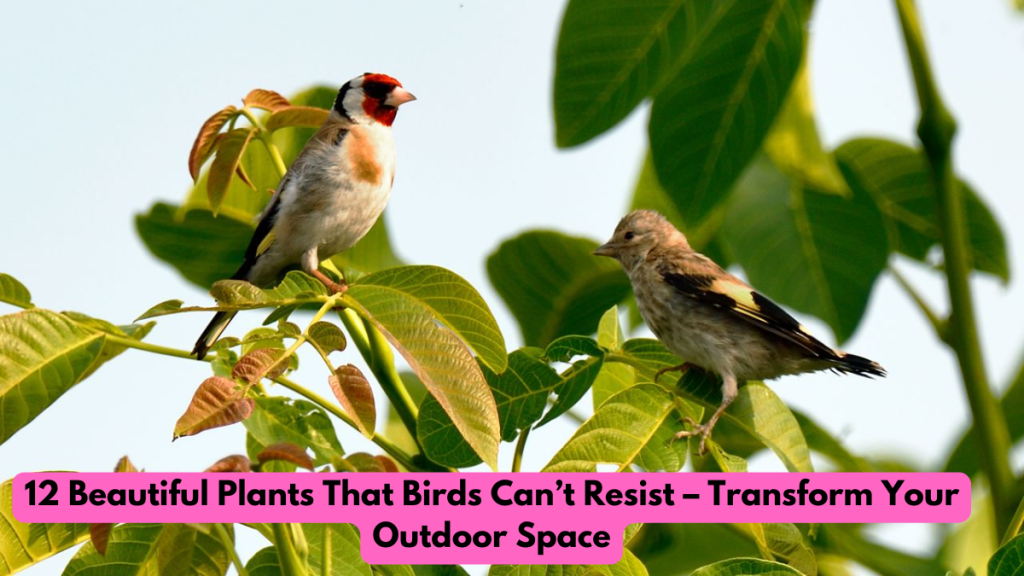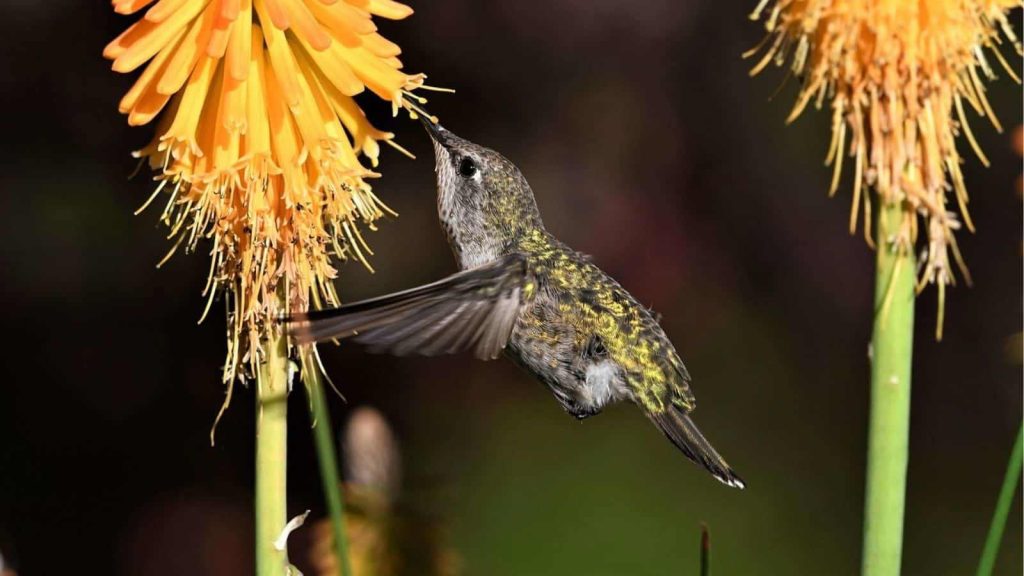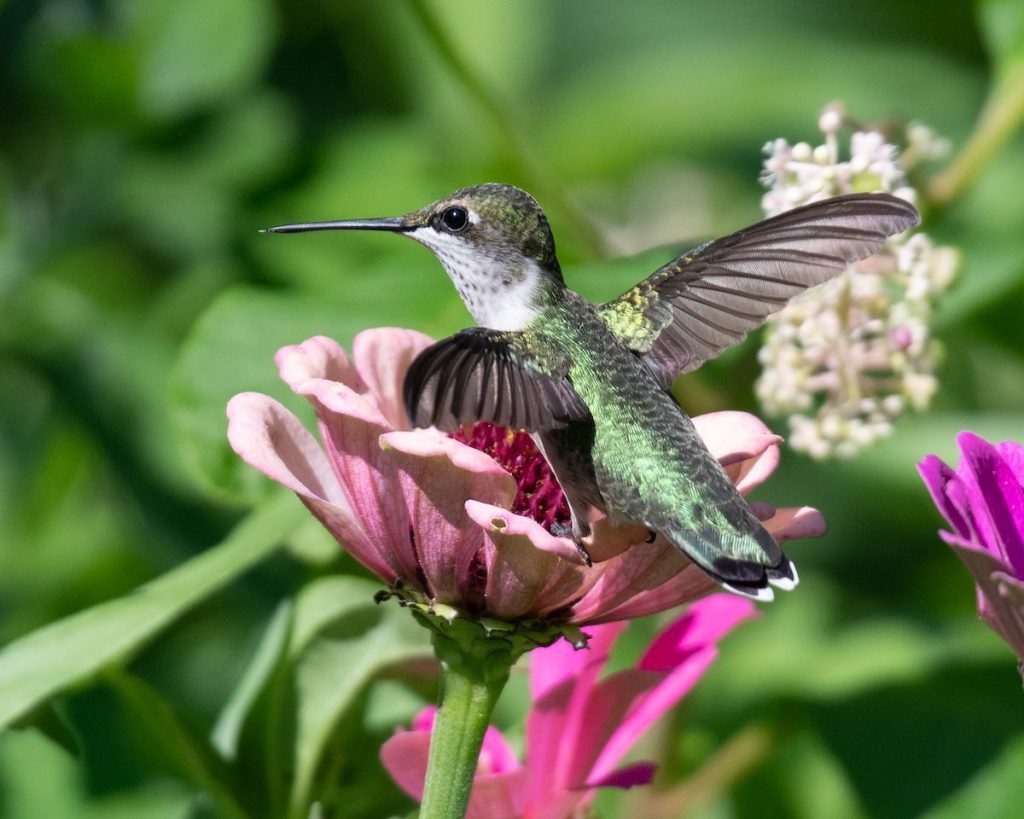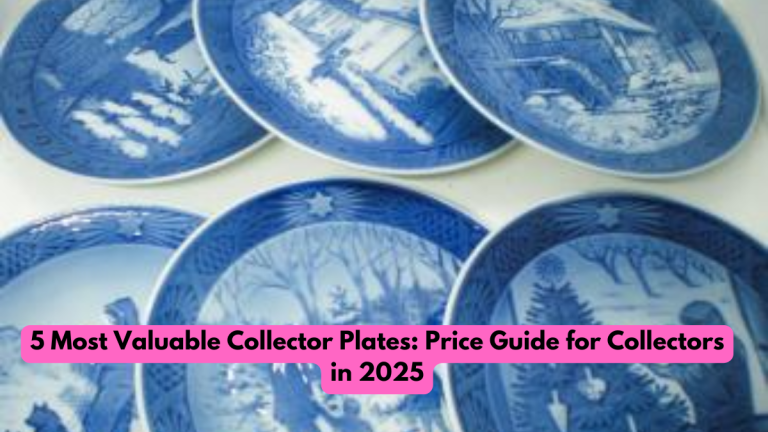
If you want to transform your outdoor space into a vibrant, lively retreat, planting a bird-friendly garden is a great place to start. Birds not only bring movement and song to your backyard, but they also help control pests and pollinate plants. The key? Choosing the right flora.
Here are 12 gorgeous plants that are not only easy on the eyes but also irresistible to birds. By incorporating these into your garden, you’ll create a welcoming haven for a wide variety of feathered visitors.
1. Sunflowers (Helianthus annuus)
Sunflowers are a magnet for birds like cardinals, chickadees, and finches. Their large seed heads provide an abundant source of food, and their towering stalks add a cheerful touch to any garden.
2. Purple Coneflower (Echinacea purpurea)
A garden favorite, this hardy perennial is known for its bright purple petals and ability to attract goldfinches, chickadees, and other seed-loving birds once the flowers go to seed.
3. Black-Eyed Susans (Rudbeckia hirta)
These daisy-like blooms are not only striking in the summer months but also produce seed heads that birds such as grosbeaks and nuthatches love to snack on.
4. Common Milkweed (Asclepias syriaca)
Best known for supporting monarch butterflies, milkweed also provides seed pods that draw in finches and sparrows. Its flowers attract pollinators, making it a biodiversity booster.
5. American Elderberry (Sambucus canadensis)
This fast-growing shrub is a buffet for birds like robins and waxwings thanks to its clusters of small, dark berries. It’s also a native plant that fits well into most North American gardens.
6. Red Mulberry Tree (Morus rubra)
If you have the space, the Red Mulberry tree produces sweet berries that attract orioles, tanagers, and cardinals. It’s a low-maintenance tree with major benefits for wildlife.
7. Serviceberry (Amelanchier spp.)

Also known as Juneberry, this tree blooms in early spring and offers berries loved by bluebirds, thrushes, and grosbeaks. Its white flowers and red fruits add seasonal interest.
8. Hawthorn (Crataegus monogyna)
Common in hedgerows, hawthorn trees and shrubs produce bright red haws that birds like blackbirds and thrushes rely on in the colder months.
9. Cotoneaster (Cotoneaster spp.)
A dense shrub with glossy leaves and red berries, cotoneaster provides excellent cover and winter food for birds. It also works well in structured landscape designs.
10. Spindle Tree (Euonymus europaeus)
Known for its striking pink fruit and orange seeds, this ornamental shrub is a treat for robins and blackbirds during the autumn months.
11. Common Holly (Ilex aquifolium)
A staple of holiday decor, holly’s bright red berries offer critical sustenance to birds like redwings and fieldfares when food is scarce in winter.
12. Trumpet Honeysuckle (Lonicera sempervirens)
This vine’s tubular red flowers are a favorite of hummingbirds, while its berries attract finches and thrushes. It’s ideal for fences and trellises.
Why It Matters?

Creating a bird-friendly garden not only benefits wildlife but also contributes to broader conservation goals. According to the U.S. Fish and Wildlife Service, over 800 species of birds call the United States home, and many rely on suburban gardens for food and shelter (fws.gov).
The Audubon Society recommends incorporating native plants to best support local bird populations (audubon.org). These plants are adapted to regional climates and often require less maintenance, fertilizer, and water.
Tips for a Bird-Friendly Garden
- Avoid pesticides: Many chemicals can harm birds directly or reduce the insect populations they rely on.
- Provide water: A bird bath or small pond offers essential hydration and bathing opportunities.
- Plant in layers: Combine trees, shrubs, and ground cover to offer shelter at various heights.
- Leave seed heads: Don’t deadhead your flowers in the fall. Letting seeds mature provides food into the winter.
Final Thoughts
Planting a garden that birds love doesn’t mean sacrificing aesthetics. With the right choices, your outdoor space can be both beautiful and ecologically beneficial. These 12 plant options are just the start – explore local native plant guides to find what works best for your region.
For more gardening tips and native plant recommendations, visit the U.S. Department of Agriculture’s PLANTS database.
Let your garden bloom with life – and song.



